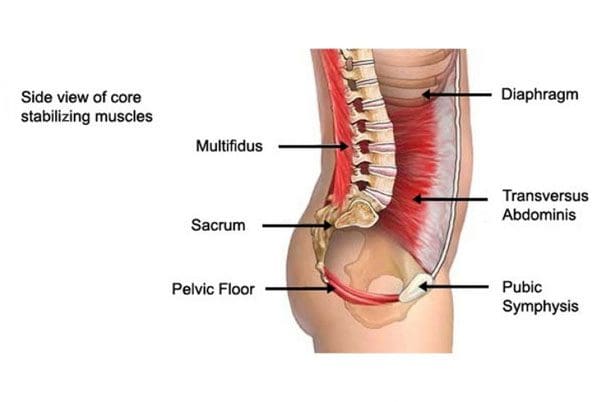Muscle strength can mean different things to different people. But in general, the body's muscles need to be strong and agile enough to endure work, sports, and regular physical daily activities. Exercise and chiropractic fitness complement each other with strong evidence supporting exercise as being as effective as other non-surgical treatments for low back pain.

A chiropractic fitness treatment program is highly effective for increasing core muscle strength and reducing acute lower back pain. This combined with light aerobic exercise helps with digestion, keeps the muscles toned, and promotes better circulation. An acute and chronic low back pain treatment/management plan could include:
- Chiropractic manipulation/balancing
- Massage therapy to keep muscles loose and circulation moving
- Core strengthening with an exercise regimen - Example could be walking around the neighborhood, core strengthening, yoga, and more.
- Stretching regimen
- Injury prevention guidelines
- Health coaching includes diet, supplements, weight-loss, stress management, and more.

Individuals experiencing chronic soreness and/or fatigue could be presenting something more serious. There are several factors that measure the strength of the muscles other than just physical force.
Factors that Affect Strength
There are different ways to measure muscle strength. There are variables like endurance, muscle coordination, and maximum force are some of the ways to assess the health and strength of the muscles. Factors that can influence strength include:
- Functional neural signal sending and the response of the muscle/s
- The number and size of the muscle cells
- The ability of the muscle/s to generate appropriate force
- The way the spinal cord responds to stimulation
- Being able to sense the joints moving in space
- The ability of the nervous system to coordinate proper movement and generate muscle force

Spinal Alignment
Muscle strength involves the nervous system. Muscle health is important, but the input and output of each muscle transmitting from the nervous system is the control center for proper movement and strength. When the connection is healthy and strong, the nervous system and brain can effectively generate movement and regulate the right amount of muscle strength.
When increasing strength, the focus should be on proper nerve circulation, which starts with spinal alignment. It enhances the effectiveness of strength training. Even small changes/disruptions can lead to the spine shifting out of alignment. These changes over time begin to affect the signals being sent between the spinal cord, brain, and muscles.

Once alignment is addressed, then the body can heal and strengthen itself naturally and the exercise regimen can be reevaluated by the chiropractor. It is important for a chiropractor to reevaluate a patient's exercise program following the initial therapy to determine the effectiveness. Measuring the spinal range of motion and the effectiveness of the exercises is one way to make a determination. Then the exercise regimen could be advanced or intensified for optimal health. Options can include:
- Increasing the intensity of the workout
- Exercising more
- Lifting heavier
- Increasing reps
- Boosting endurance
With time, there should be less fatigue and more energy for daily physical tasks.

Proper spine care is handled best through chiropractors that specialize in sports physical fitness therapy/rehabilitation and preventive care. They follow specific protocols that focus on the root cause of spinal misalignment. The key factor is to get adjusted, get moving, and improve body health.
El Paso Chiropractor 79936
Dr. Alex Jimenez’s Blog Post Disclaimer
The scope of our information is limited to chiropractic, musculoskeletal, physical medicines, wellness, and sensitive health issues and/or functional medicine articles, topics, and discussions. We use functional health & wellness protocols to treat and support care for injuries or disorders of the musculoskeletal system. Our posts, topics, subjects, and insights cover clinical matters, issues, and topics that relate and support directly or indirectly our clinical scope of practice.*
Our office has made a reasonable attempt to provide supportive citations and has identified the relevant research study or studies supporting our posts. We also make copies of supporting research studies available to the board and or the public upon request. We understand that we cover matters that require an additional explanation as to how it may assist in a particular care plan or treatment protocol; therefore, to further discuss the subject matter above, please feel free to ask Dr. Alex Jimenez or contact us at 915-850-0900. The provider(s) Licensed in Texas& New Mexico*
References
Gudavalli, Maruti Ram et al. “A randomized clinical trial and subgroup analysis to compare flexion-distraction with active exercise for chronic low back pain.” European spine journal: official publication of the European Spine Society, the European Spinal Deformity Society, and the European Section of the Cervical Spine Research Society vol. 15,7 (2006): 1070-82. doi:10.1007/s00586-005-0021-8




